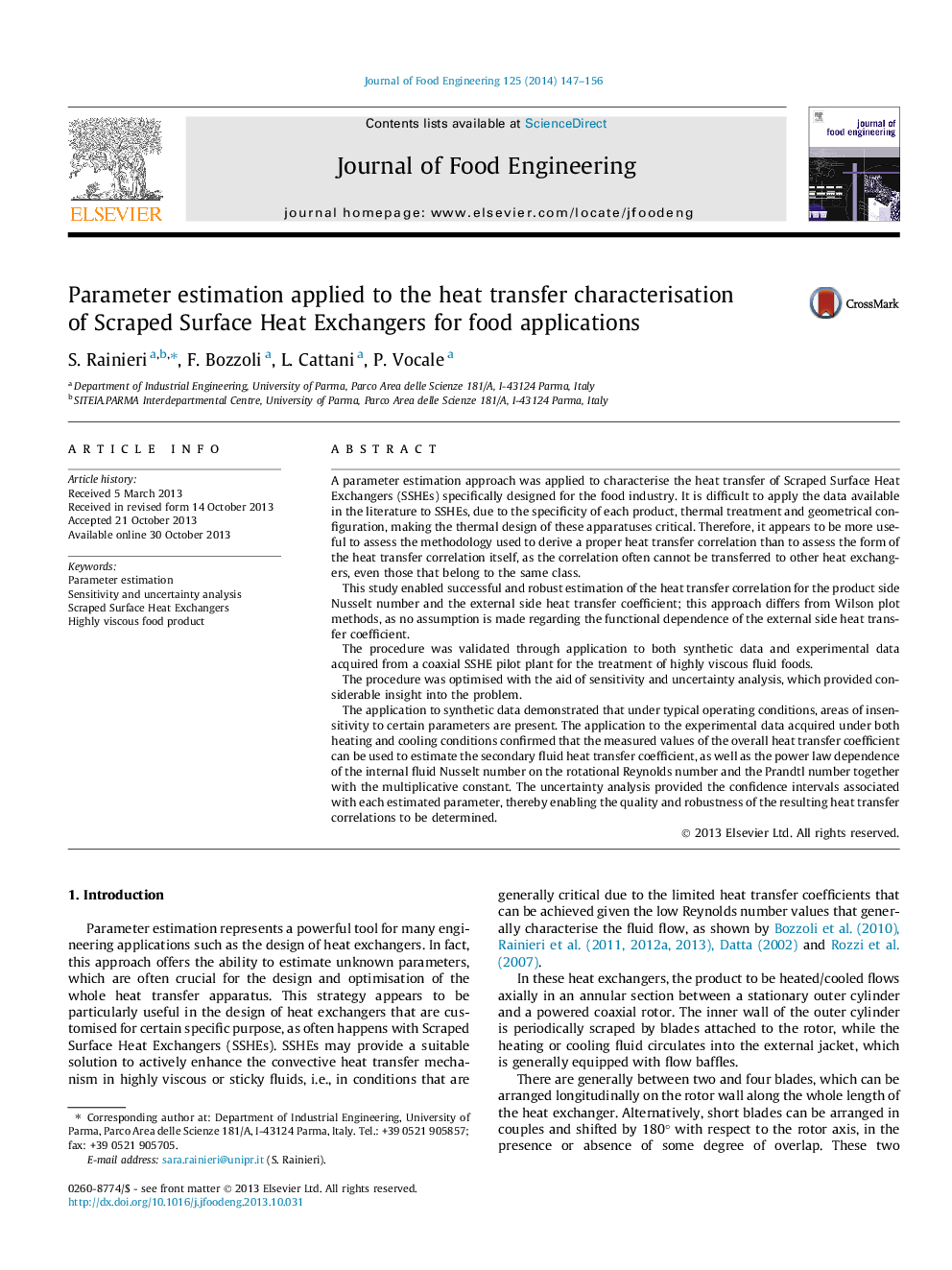| Article ID | Journal | Published Year | Pages | File Type |
|---|---|---|---|---|
| 223261 | Journal of Food Engineering | 2014 | 10 Pages |
•The application of the parameter estimation approach to SSHEs was discussed.•The procedure was validated trough application to synthetic and experimental data.•The sensitivity and uncertainty analysis was considered.•The robustness of the estimated heat transfer correlations was quantified.
A parameter estimation approach was applied to characterise the heat transfer of Scraped Surface Heat Exchangers (SSHEs) specifically designed for the food industry. It is difficult to apply the data available in the literature to SSHEs, due to the specificity of each product, thermal treatment and geometrical configuration, making the thermal design of these apparatuses critical. Therefore, it appears to be more useful to assess the methodology used to derive a proper heat transfer correlation than to assess the form of the heat transfer correlation itself, as the correlation often cannot be transferred to other heat exchangers, even those that belong to the same class.This study enabled successful and robust estimation of the heat transfer correlation for the product side Nusselt number and the external side heat transfer coefficient; this approach differs from Wilson plot methods, as no assumption is made regarding the functional dependence of the external side heat transfer coefficient.The procedure was validated through application to both synthetic data and experimental data acquired from a coaxial SSHE pilot plant for the treatment of highly viscous fluid foods.The procedure was optimised with the aid of sensitivity and uncertainty analysis, which provided considerable insight into the problem.The application to synthetic data demonstrated that under typical operating conditions, areas of insensitivity to certain parameters are present. The application to the experimental data acquired under both heating and cooling conditions confirmed that the measured values of the overall heat transfer coefficient can be used to estimate the secondary fluid heat transfer coefficient, as well as the power law dependence of the internal fluid Nusselt number on the rotational Reynolds number and the Prandtl number together with the multiplicative constant. The uncertainty analysis provided the confidence intervals associated with each estimated parameter, thereby enabling the quality and robustness of the resulting heat transfer correlations to be determined.
